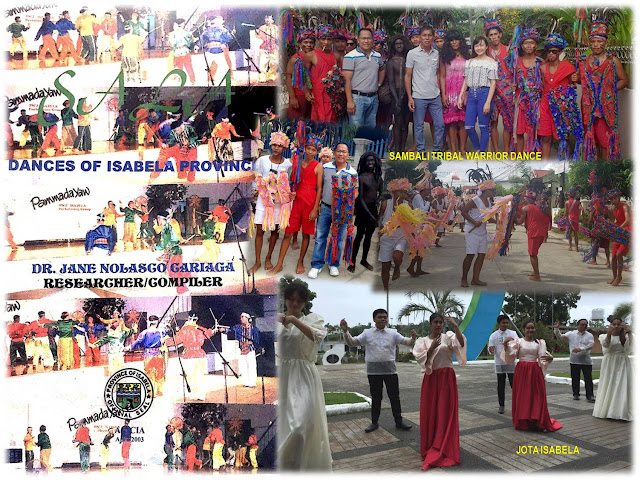15. VIVA SEÑOR SANTO NIÑO!
VIVA SEÑOR SANTO
NIÑO!
Dr. Troy
Alexander G. Miano
15
January 2017
During my adolescence, I stayed more at my uncle’s house in Galas District in Quezon City rather than in our home in Cubao, also within the city. My aunt, wife of my mom’s older brother was a devotee of the Santo Niño. She had a big icon at a small garden beside the dining area and would occasionally change the costume of the religious statue. She would actively participate in the young Jesus Christ feast day which falls every third Sunday of January since their barangay was named after the Child Jesus.
Santo Niño is the most recognizable religious image in the
Philippines for it is the oldest one in the archipelago. It was first brought
to the islands by Ferdinand Magellan (1480-1521) in 1521. His scribe, Antonio
Pigafetta (1491-1531) gave it to the local tribe queen in Cebu as a baptismal
gift after her conversion to the Christian faith. It is
said to have survived a raging inferno in 1566, after a battle broke out
between the Spanish soldiers and the locals. Believing it was a miracle, people
venerated the image and has been treated as the patron saint of Cebuanos ever
since.
The last
time I was at the Church and Convent of Santo Niño in Cebu was during the
National Convention of the National Movement of Young Legislators in 2014. I
saw the 1941 Philippines
Historical Committee marker outside the religious edifice which reads: “The Church and Covent erected by the
Augustinian fathers under the Rev. Andres Urdaneta in 1565 were the first
established in the Philippines, both were burned down on November 1, 1566. The
second church was likewise destroyed by fire in March of 1628, but rebuilt soon
after (1628-1629) under the administration of the historian Rev. Juan De
Medina. O.S.A. The present massive church was designed and constructed during
the priorship of Rev. Juan Albarran O.S.A., (1735-1737). The Santo Niño,
venerated in the church since the time of Legaspi, is the center of intense
devotion and religious pilgrimages throughout the Visayas.”
Being
the country’s most common religious image and combining the Filipino love for celebrations,
dozens of festivals for the Santo Niño have been going on in the country for
ages and most are normally commemorated every third Sunday of January. Some of
the festivals are: Sinulog-Santo
Niño (Cebu City), Ati-Atihan (Kalibo, Aklan), Sinulog sa Kabankalan (Kabankalan,
Negros Occidental), Dinagyang Festival (Iloilo), Binanog Festival (Lambunao,
Iloilo), Kahimunan
Festival (Butuan City, Agusan Del Norte), Makato Santo Niño Festival (Makato, Aklan), Kahimunan
Festival (Butuan City), Kinaradto Festival (Buenavista, Guimaras), Altavas
Santo Niño Festival (Altavas, Aklan), Ibajay Ati-Ati Municipal Festival and
Dinagsa Ati-Atihan Festival (Cadiz City, Negros Occidental), Hinirugyaw
Festival (Calinog, Iloilo), Santo Niño de Malolos Festival (Malolos,
Bulacan) and Lakbayaw
Festival (Tondo, Manila).
Aside from the festivals, three Local Government Units in the
country were named after the Holy Child. One Santo Niño town in Luzon, another
in the Visayas and one in Mindanao. Santo Niño is a second-class municipality in the province of Cagayan, in northern Luzon. According to Rev.
Fr. Pedro V. Salgado’s “Cagayan Valley and Eastern Cordillera (1581-1898), Santo Niño is among the last towns created by the
Spaniards in Cagayan Valley. The original name of the place was Cabarungan. On
November 27, 1897, Cabarungan was created into a town by virtue of a Royal
Order and was renamed as “Santo
Niño”. Don Manuel Faire, an immigrant
from the Ilocos, was instrumental in the creation of the new pueblo. The decree
also separated the visita of Tabang
from Piat town and joined with the new Santo Niño town. On February 28,
1914 the name of the municipality was changed to “Faire” to honor the much
loved Don Manuel. In more recent times, the town’s name was reverted to “Santo Niño.” According to the 2015 census, it has a
population of 27,219 people.
In the Visayas, particularly in the province of Samar
(Western), is the island-municipality of Santo Niño situated at the Samar Sea. It consists of the northern island of
Camandag and the larger Santo Niño Island about 3.1 kilometers to the south. In
between those two islands is the smaller Pilar Island. The
municipality's poblacion is
located in Santo Niño Island. According to the 2010 census, the Municipality of
Santo Niño has a population of 13,504 people with a total area of 29.53 square
kilometers. “Limbankawayan” was the town’s ancient Bisayan name which was derived
from the word “limba” meaning “red” and “kawayan” meaning “bamboo”. During
olden times, the red colored kawayan
(Phyllostachys iridescens) was abundant in the island. In 1895, the Bishop of
Cebu had recommended that the group of islands achieve a parish status. It was
only in 1897 when the final approval and confirmation was relayed from Madrid
in Spain through Manila. On September 29, 1898, a Royal Decree separated the
islands from the old pueblo of
Calbayog and was created into a town and a parish.
In
Mindanao, Santo Niño town is located in the province of South
Cotabato in Soccsksargen region. A third class municipality with a
population of 40,947 according to the 2015 census, it was formerly called
Barrio Trece of the Norala Settlement District of the National
Land Settlement Administration. In 1980, the Sangguniang Panlalawigan
of South Cotabato passed a resolution requesting Region XI (Southern
Mindanao) Assemblyman (1978-1980) Jose T. Sison to file a bill at the
Philippine Parliament to create Santo Niño into a municipality. Parliament Bill
No. 1220 was finally passed and approved on December 23, 1980,
when Ferdinand Marcos signed it into law as Batas Pambansa Bilang
90. In a plebiscite held on April 7, 1981, the law was ratified.




hi .... currently working on my thesis about lakbayaw festival ,,, tnks for this info...
TumugonBurahin